Oldest Programming Languages: Programming languages provide computers and all of our electronic equipment instructions, which may not be evident to the normal person but actually makes the contemporary world function. Plankalkül, invented between 1942 and 1945 by Konrad Zuse, was the first high-level programming language. Numerous programming languages that existed at the time have since been developed and are no longer used. Even after their many years of existence, the programming languages on this list remain among the most widely used.
Recommended: Hardest Universities To Get Into 2024
Top 14 Oldest Programming Languages In the World 2024
1. Fortran: Fortran, formerly known as FORTRAN, is the oldest programming language currently in use. It was initially commercially distributed in 1957. The programming language was created by an IBM team led by John Backus.

Backus presented a plan to his IBM supervisors in late 1953 to create a more useful programming language than assembly language for their IBM 704 mainframe computer. Fortran was made available to the general public three years after it was made usable one year later. Fortran swiftly transformed the field of computer programming, and it has been in use ever since for the past 60 years.
2. Lisp: Lisp is the 2nd oldest high-level programming language still in common use today following Fortran, which was introduced just a year later. John McCarthy, a renowned computer scientist and one of the pioneers in the field of artificial intelligence, created Lisp. During the summer of1956, McCarthy began creating the concept for Lisp while working on the Dartmouth Summer Research Project on Artificial Intelligence.
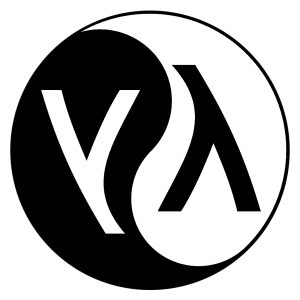
In 1958, Lisp—which is an acronym for LISt Processor—was prepared for general use. A version of the original programming language, Lisp, has undergone several changes over the years and is currently spoken in a broad range of dialects.
Also see: Best Countries to do Business in Africa 2024
3. COBOL: In 1959, the Conference on Data System Languages created COBOL, which stands for Common Business Oriented Language (CODASYL). Those days, the growing expense of programming alarmed both computer users and manufacturers. It was proposed that conversion would become more affordable and fast if a typical business-oriented language were utilized.

These worries led to a meeting with the Department of Defense, which led to the birth of COBOL, which has since been predominantly utilized in corporate, financial, and administrative systems for organizations and governments. Programming language FLOW-MATIC created by Grace Hopper served as a foundation for some of COBOL’s design.
4. BASIC: While every programming language on this list has had an impact on the computer world, BASIC (Beginners’ All-purpose Symbolic Instruction Code) stands out as possibly the most innovative. John G. Kemeny and Thomas E. Kurtz first published BASIC in 1964 at Dartmouth College, enabling common people—particularly undergraduates majoring in subjects other than science and mathematics—to program and operate computers.
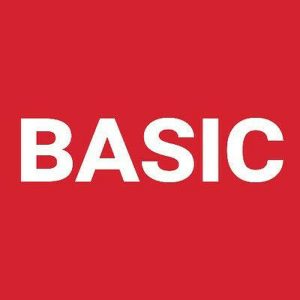
The most popular computer programming language over time was BASIC because it was so simple to learn. The 1980s saw a drop in the use of BASIC, but more recently, interest in the programming language has increased.
Recommended: Most Used Social Media In Nigeria 2024
5. Pascal: Although BASIC was still taught in many institutions, Niklaus Wirth’s Pascal gained popularity among students seeking to learn more sophisticated programming abilities. For the purpose of promoting organized programming and data organization, Wirth invented Pascal. People with minicomputers or microcomputers utilized Pascal often.

Pascal was used to create commercial software in the late 1970s and early 1980s in addition to being utilized in college-level computer programming classes. Blaise Pascal, a well-known French mathematician, philosopher, and physicist, was honored when Niklaus Wirth named his programming language Pascal in his honor.
6. C: Another significant programming language that has been used extensively and impacted many other languages is C. Dennis Ritchie created the programming language C, a replacement for B, at Bell Labs between 1972 and 1973 for the brand-new Unix operating system. C was utilized in several projects during the following few years by the Bell System as well as by other research-focused corporate, academic, and governmental institutions. C gained popularity in the 1980s and eventually became one of the most extensively used programming languages.
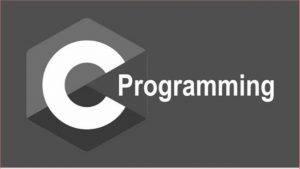
C was created to support cross-platform programming, making it simpler to create programs that can be easily converted to several computer platforms and operating systems with few source code modifications.
Recommended: Best Online Universities in the World
7. Smalltalk: An early object-oriented programming language called Smalltalk was created at Xerox PARC by a group under the direction of Alan Kay. At the Learning Research Group (LRG) at Xerox PARC, it was developed in part for educational purposes, notably for constructionist learning (in which students build mental models to comprehend the world around them). Smalltalk-80, the commercial version of Smalltalk, was not published until 1980.

Before before, only Xerox Alto machines could run Smalltalk. Smalltalk remains one of the most cherished programming languages of all time, despite the existence of more sophisticated object-oriented programming languages. Smalltalk had a significant impact on almost all object-oriented languages that followed, including Flavors, Java, Ruby, Python, CLOS, Objective-C, and several more.
8. SQL: Early in the 1970s, Donald D. Chamberlin and Raymond F. Boyce created SQL (Structured Query Language) at IBM. Edgar F. Codd’s relational paradigm for database administration was one of the first commercial computer languages to be used. The database management system, System R from IBM, was designed with this programming language in mind. Since that time, the SQL language has been recognized as the de facto standard language for communicating with relational databases by both the American National Standards Institute (ANSI) and the International Standards Organization (ISO).
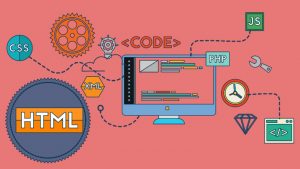
MySQL, which Oracle created in the late 1970s in response to IBM’s SQL release, is one of the most well-known SQL database management systems.
Recommended: Best Science courses to study in the University
9. Ada: Under a contract with the US Department of Defense, Jean Ichbiah and his team at CII-Honeywell-Bull in France created Ada in the early 1980s. A portion of Pascal and other prior languages served as the foundation for the structured, statically typed, imperative, and object-oriented high-level programming language.
The Department of Defense was utilizing hundreds of programming languages when Ada was developed, from 1977 and 1983, and it was intended to take their place. Ada is still used today to create very big and important software systems.
10. MATLAB: As suggested by its name, MATLAB was created by MathWorks in the early 1980s and is used by millions of individuals with backgrounds in engineering, science, and economics. MATLAB, which started as a straightforward interactive matrix calculator, now enables matrix manipulations, function and data visualization, algorithm implementation, user interface design, and interfacing with various programming languages.
Because LINPACK and EISPACK are both mathematical software libraries, Cleve Moler created MATLAB so that his students could utilize them without having to learn Fortran. The previous few decades have seen MATLAB continue to be used successfully and widely.
Recommended: How To Use Chatgpt Without Being Detected
11. ALGOL: The ambitious objective of PL/I, or Programming Language One, when it first appeared in the early 1960s was to be a flexible language that could support systems, commercial, and scientific programming. In order to offer a one-stop shop for a wide range of applications, PL/I combined capabilities from Fortran, COBOL, and ALGOL.

Its capacity for complicated computation, data manipulation, and system-level programming made PL/I stand out. It acted as a kind of “Swiss Army knife” language, providing a wide range of functionality for different jobs.
However, due to implementation difficulties brought on by its broad scope and complexity, the language has undergone several iterations. PL/I is being used today, but less often than other languages and in particular legacy systems and sectors like finance and aerospace.
12. PL/I: The ambitious objective of PL/I, or Programming Language One, when it first appeared in the early 1960s was to be a flexible language that could support systems, commercial, and scientific programming. In order to offer a one-stop shop for a wide range of applications, PL/I combined capabilities from Fortran, COBOL, and ALGOL.
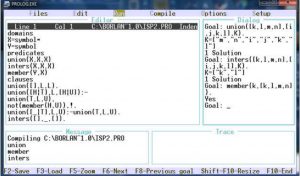
Its capacity for complicated computation, data manipulation, and system-level programming made PL/I stand out. It acted as a kind of “Swiss Army knife” language, providing a wide range of functionality for different jobs.
However, due to implementation difficulties brought on by its broad scope and complexity, the language has undergone several iterations. Its legacy may be found in the structured programming paradigm and the focus on maintainability and code clarity.
Recommended: Highest Paying Programming Languages
13. APL: The mid-1960s programming language known as APL, created by Kenneth E. Iverson, adopted a completely new approach to programming grammar. The distinctiveness of APL is found in its extensive use of mathematical symbols, which encourages clear and expressive code.

APL, which is primarily an array-oriented language, excels at performing mathematical and numerical operations. It promotes a vectorized method of problem-solving, which, although effective, can be difficult for newbies to understand.
Although APL has specialised uses in industries like banking, scientific computing, and data analysis, its distinctive syntax may prevent APL from becoming more widely used. Nevertheless, it has developed into descendants like J and K, which try to keep its array processing capabilities while also simplifying its syntax. APL continues to have a vibrant community of users and developers, demonstrating the language’s lasting popularity in specialised industries.
14. Forth: Charles H. Moore invented Forth in the early 1970s, and it is a prime example of simplicity, effectiveness, and flexibility. It has mostly established a niche in real-time and embedded systems applications.

The stack-based execution paradigm that Forth uses is at the heart of its architecture. The language’s syntax and execution are made simpler by pushing and pulling data onto and off a stack to accomplish operations. Forth is very effective and well suited for interactive development environments where programmers may write and test code progressively because to its stack-centric approach.
Because of its efficiency and tiny memory footprint, Forth is a popular choice in situations with limited resources, such as embedded devices and control systems. Due to the participatory development style of Forth and its applicability for real-time applications, the language has attracted a devoted following of users and enthusiasts who work hard to advance it.
Recommended: Richest Presidents In The World And Their Networth 2024
Conclusion
By giving instructions to computers and other electronic equipment, programming languages do actually aid in the smooth operation of the contemporary world. Developers employ a wide variety of programming languages on a regular basis. Even in 2024, engineers still appreciate utilizing some of the older programming languages that are occasionally offered to them.

Edeh Samuel Chukwuemeka, ACMC, is a lawyer and a certified mediator/conciliator in Nigeria. He is also a developer with knowledge in various programming languages. Samuel is determined to leverage his skills in technology, SEO, and legal practice to revolutionize the legal profession worldwide by creating web and mobile applications that simplify legal research. Sam is also passionate about educating and providing valuable information to people.